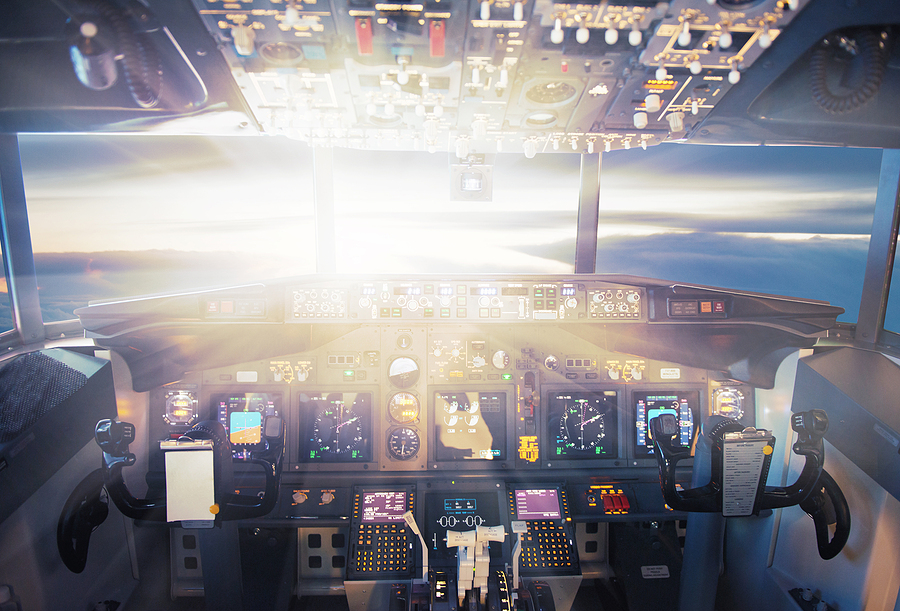Most people, even non-pilots, know that airlines pressurize the cabins of their aircraft. They may not know that the maximum cabin pressure allowed is the equivalent of 8,000 ft[1]. In general aviation, most people are not flying around in pressurized aircraft. But is it the pressure that is important or is it the oxygen? As most of you already know, it is oxygen that matters more. Or is it that simple?
Oxygen makes up about 20% of the Earth’s atmosphere. It doesn’t really matter the altitude; the percentage stays pretty constant. But there is a relationship between atmospheric pressure and the amount of oxygen. As altitude increases, air pressure decreases. As air pressure decreases, the number of molecules of air decreases.
At 50,000 ft there are a lot fewer molecules of air. So while oxygen still makes up 20% of the atmosphere at 50,000 ft, there aren’t enough molecules OR enough pressure to feed your need. In fact, at 50,000 ft you have about 10 seconds before you lose the ability to control an aircraft[2]. Actually, at 50,000 ft the air pressure is so low that you have to start worrying about the dissolved gasses in your blood deciding they would like to be gasses again, like when you open a bottle of soda. This is exactly what causes the bends when a diver surfaces too quickly.
Going back to the question of “is it the air pressure or is it the oxygen,” the answer is … both. Inside our lungs, the exchange of gasses is governed by the fractional pressure of each gas involved, called partial pressure, and there is competition between oxygen, carbon dioxide, and water vapor. As the air pressure decreases, and the number of oxygen molecules also decreases, so does the partial pressure of oxygen. The brain is very sensitive to a lack of oxygen. Once you get below a certain partial pressure of oxygen, your ability to adequately supply oxygen to your brain takes a nosedive, and maybe your aircraft with it.
General aviation 14 CFR 91.211 says that you only need supplemental oxygen if you fly above 12,500 ft for more than 30 min so long as you don’t exceed 14,000 ft. Any time above 14,000 ft requires oxygen for the minimum required flight crew and above 15,000 ft oxygen is required for all persons. That might lead you to believe that 12,500 ft is the point where we need to start worrying that the partial pressure of oxygen is low enough that we should be concerned, but you would be wrong. The law is not based on human physiology. Rumor has it that 14 CFR 91.211 was written to allow for the crossing of the Sierra Nevada without the need for adding the expense of oxygen equipment, but I cannot confirm this rumor.
As it turns out, right about 10,000 ft is the magic altitude where the partial pressure of oxygen drops enough that most people will start to suffer the effects of reduced oxygen. This is why the military sets their supplemental oxygen requirement at 10,000 ft; it lines up with actual human physiology.
Supplemental oxygen works by increasing the content of oxygen going directly into your lungs to increase the partial pressure sufficiently enough to counteract the drop in overall air pressure. With proper equipment and 100% supplemental oxygen you can move that 10,000 ft pressure line up to about 40,000 ft[2].
My own personal experience is that I will have noticeable symptoms of hypoxia at about 11,000 ft. That probably means I have unrecognized symptoms even before that such as delayed reaction time and/or impaired decision making. Keep in mind that every individual will be different. Some people with chronic illnesses or tobacco use will likely have symptoms even before 10,000 ft.
Our recommendation is that for all non-pressurized flights above 10,000 ft the flight crew should be using supplemental oxygen. In future articles, we can expand on the relationship between oxygen and human physiology as it relates to flight.
ABOUT WINGMAN MED
We are designated FAA aviation medical examiners, residency trained in Aerospace Medicine, and graduates of the Naval School of Aviation Safety. After years of helping friends and colleagues keep their medical certificates and stay in the air, we founded Wingman Med so we can do the same thing for you.
Also see:
Environmental Heat Injuries in the Cockpit
Make Sure VA Benefits Don’t Become FAA Liabilities





